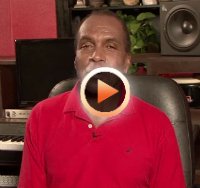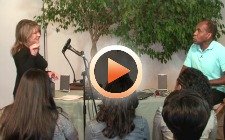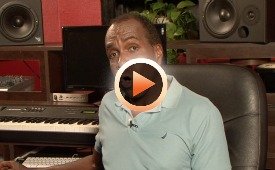Singing Technique And Projection Tricks

You are about to learn about singing technique and projection.
Would you like to be able to project your voice further and more powerfully? If so, read on...
Did you know that an opera singer can project over an entire audience, but if a normal person yelled at the top of their lungs, they wouldn’t be heard?
Why is this?
And how can you use this to improve your voice?
Is there a special technique that these singers use to project their voices in this devastating fashion?
Indeed there is.
It has everything to do with their use of vocal resonance.
The Secret To Star Singing
Click HERE For The Secret To Star Singing
The Secret To Star Singing
Click HERE For The Secret To Star Singing
Now in a moment I’ll tell you exactly how this use of vocal resonance allows their voices to be heard over the orchestra. But first, let me talk a little about vocal resonance itself.
With this understanding you will be in a much better position to project your voice further and louder than you can imagine.
Vocal resonance is simply the way your sound waves bounce around inside your facial structure to amplify the sound.
So when you sing a note, the initial sound wave is created as air pushes through your vocal chords. (a topic for another article)
After this initial sound wave has been created, it moves up through your throat, mouth, and nasal cavity. As the sound wave “bounces around” in these acoustic cavities, it is transformed into the note that the listener hears.
If you can learn to balance your vocal resonance or balance the proportion of the way the sound is spread through these cavities, your tone will be superb.
But How Does This Help You To Project Your Voice?
Well, the first important point I wanted to make is this.
When you project your voice, your vocal resonance must be balanced.
A big mistake that many singers make, is they “yell” instead of singing when they want to project their voice. When you do this, your vocal resonance becomes unbalanced and it sounds “shouty” and “impure”
Instead you need to learn to balance your voice at lower levels. And then as you master your voice at this quieter level you can then send a little more air pressure through, and your voice will stay balanced and pure, while projecting further.
Really, being able to sing loud and powerfully, it’s a matter of becoming an expert of your voice at a medium volume, and then simply increasing the intensity. So when you are singing loudly, you are singing from the same posture and place as when you are singing quieter.
What About The Opera Singers?
Ok, let me clear up how I said that opera singers can sing over an orchestra.
There is a special technique that allows you to shape your throat in a way that produces a few “extra” frequencies when you sing. This extra frequency content is known as a “singers formant frequency”.
For all you audio buffs out there, the frequency is in the range of 3000hertz.
Here’s how it works.
When an orchestra plays, all the instruments create sounds that have frequencies within a certain range. Most of the information lies below the 800hertz range.
As you’ve just learned though, by shaping the throat, singers can actually produce sound waves at 3000hertz. Since this frequency is much higher than the 800hertz that the orchestra can produce, this frequency is clearly heard in the audience.
This next bit is quite phenomenal and interesting…
Because the audience can clearly hear the “singer’s formant frequency”, they are able to “imagine” the other parts of the singers voice that are actually being masked by the instruments in the orchestra.
Isn’t that remarkable?
This phenomenon has not yet explained by science, yet it is easy to observe. All you need to do is watch an opera singer project over an orchestra!
How Can You Apply This To Your Singing?
Despite the singer’s formant being useful when singing with an orchestra, I don’t believe it is entirely necessary.
Trying to change the shape of your throat is actually encouraging your swallowing muscles to engage-the muscles that cause singing tension and make singing miserable.
Also…
In any other style, you don’t need this extra frequency content in your voice.
Take for example, you sing in a rock band. The “singers formant” is no use in this situation. You see, the instruments in a rock band will produce frequencies in the same range as the singers formant, so it won’t allow you to project any more than before.
I feel the best thing to do is develop a singing voice that is technically correct. With this foundation you will eventually be able to sing as loud as you could ever want. Also you’re tone will remain balanced and sweet. This is the best way to approach improving your singing technique and projection.
Learning to sing this way is all about training the muscles that coordinate your vocal chords. These muscles, the “inner” larynx muscles, are the vital key to developing an incredible voice.
You can get exercises that will train these muscles, so they become highly coordinated and build strength. Once you do this, you will be able to get volume that will shake a large hall, plus the benefit of being able to sing in a completely relaxed manner.
You can learn about this set of exercises here.
They are incredibly effective, and the other thing is…
It’s impossible to build extra strength and projection into your voice from an incorrect foundation. If your voice is not operating in a “correct” way, you will forever be straining and forcing your voice for that extra volume. This will only leave you with sore throats and a dislike for singing!
Instead, develop a correct foundation with your voice. And then use this foundation to develop amazing power and projection.













